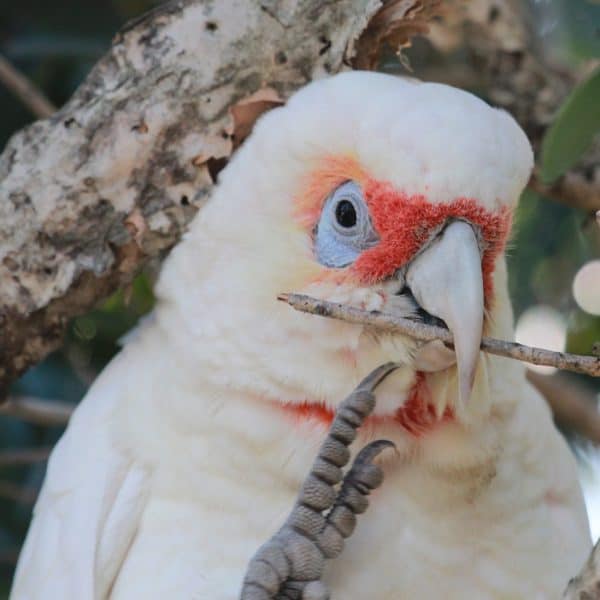Last Updated on by Mitch Rezman
Pet birds are naturally messy due to their biological habits and active lifestyles, but there are effective ways to minimize cleanup efforts:
**Why Birds Are Messy**
- **Food Scatter**:
– Birds crack open seeds/pellets, leaving husks and crumbs.
– Liquid foods (e.g., fruits) can drip or splatter.
- **Droppings**:
– Healthy birds defecate every 15–30 minutes.
– Watery droppings from high-water diets (e.g., veggies).
- **Feathers & Dust**:
– Molting sheds feathers seasonally.
– Powder-down species (e.g., cockatoos) produce fine dust.
- **Play Behavior**:
– Shredding toys, tossing cage items, and splashing water.
**How to Reduce Cleaning Time**
**️ Cage Setup Hacks**
**Tray Liners**: Use disposable newspaper or reusable silicone mats for quick daily swaps.
**Debris Guards**: Attach acrylic panels to the cage sides to block food scatter.
**Washable Play Mats**: Place cleanable office mats under the cage to catch fallen debris.
**️ Feeding Strategies**
**Pellet Diets**: Switch to compressed pellets (less messy than loose seeds).
**No-Mess Feeders**: Use covered bowls or foraging toys to contain food.
**Designated Eating Zones**: Confine messy treats (e.g., berries) to a playstand with a tray.
** Cleaning Tools**
**Handheld Vacuum**: Use a small, quiet vacuum for daily crumb/dust cleanup.
**Microfiber Cloths**: Wipe perches and surfaces faster than paper towels.
**Enzyme Cleaners**: Spray on droppings to break down stains without scrubbing.
#### ** Routine Adjustments**
– **5-Minute Daily Wipe**: Clean food/water bowls and spot-clean droppings.
– **Weekly Deep Clean**: Soak cage parts in vinegar-water (1:1) to dissolve residue.
– **Bathe Your Bird 2–3x Weekly**: Reduces feather dust and preening debris.
** Bird Training**
– Teach commands like “Go home” to return to the cage during messy activities.
– Reward calm play with treats to discourage destructive shredding.
### **Key Takeaway**
Birds’ messiness is inevitable, but optimizing their environment and routine can cut cleaning time by 50–70%. Focus on containment (guards, mats), efficient tools (vacuum, enzyme spray), and proactive habits (bathing, diet tweaks).
Author Profile
Latest entries
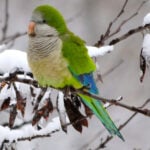 The Traveling BirdJune 26, 2025Can You Name 5 Parrot Species That Are Living Wild in the USA?
The Traveling BirdJune 26, 2025Can You Name 5 Parrot Species That Are Living Wild in the USA?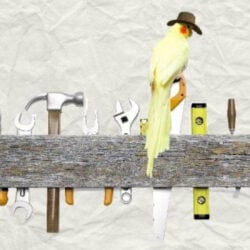 Bird BehaviorJune 26, 2025How is it Parrots Are Problem Solvers Social Animals and Even Use Tools?
Bird BehaviorJune 26, 2025How is it Parrots Are Problem Solvers Social Animals and Even Use Tools?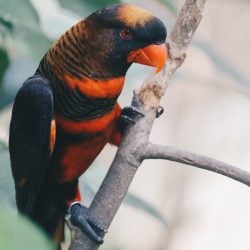 Bird & Parrot AnatomyJune 25, 2025How a Tiny Chemical Modification Makes Parrots Nature’s Living Paintings
Bird & Parrot AnatomyJune 25, 2025How a Tiny Chemical Modification Makes Parrots Nature’s Living Paintings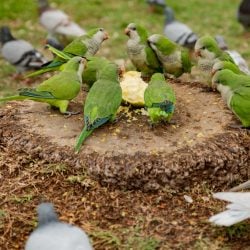 PigeonsJune 20, 2025How Do Parrots Thrive in Cities Outside Their Native Habitats?
PigeonsJune 20, 2025How Do Parrots Thrive in Cities Outside Their Native Habitats?

